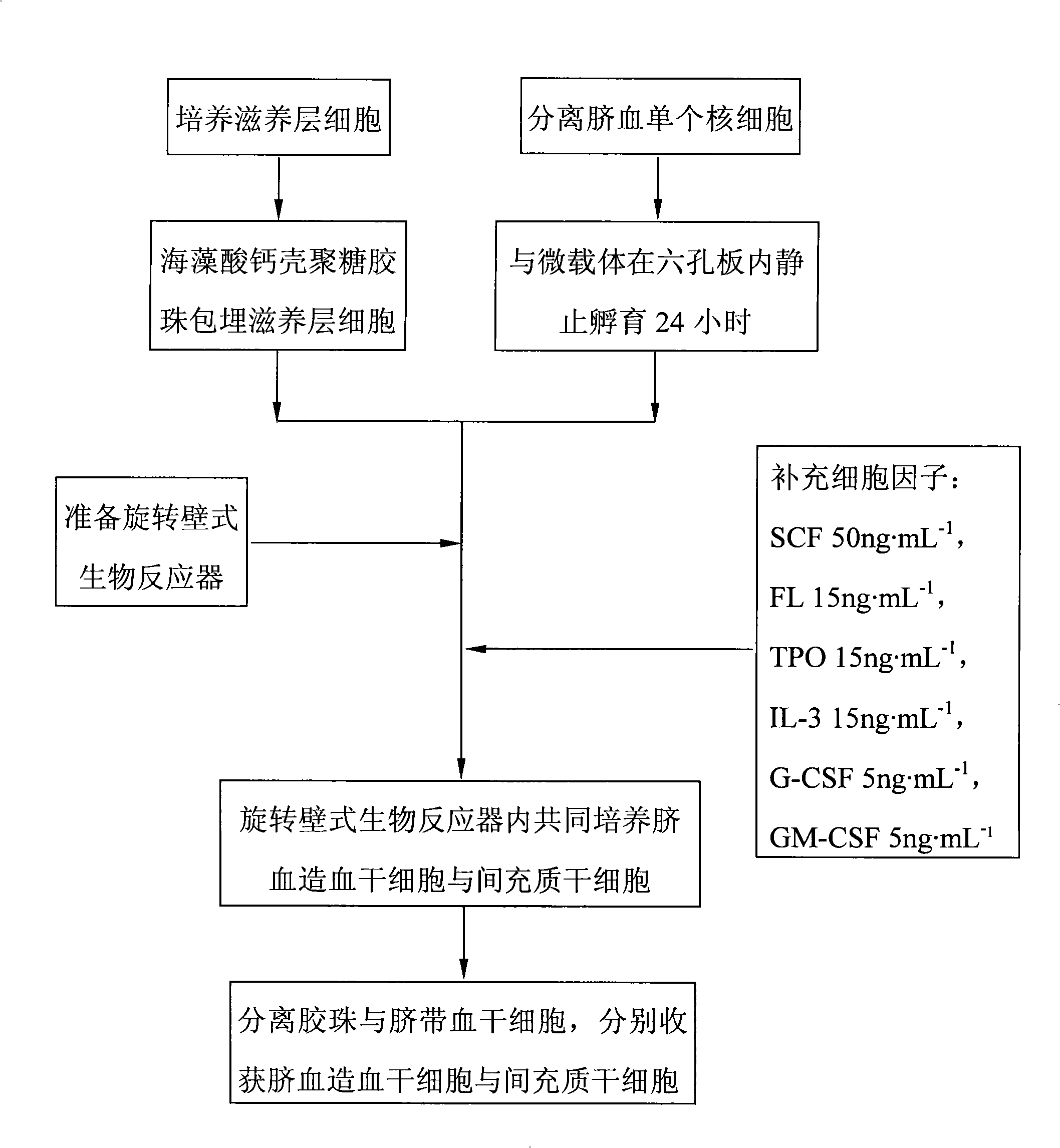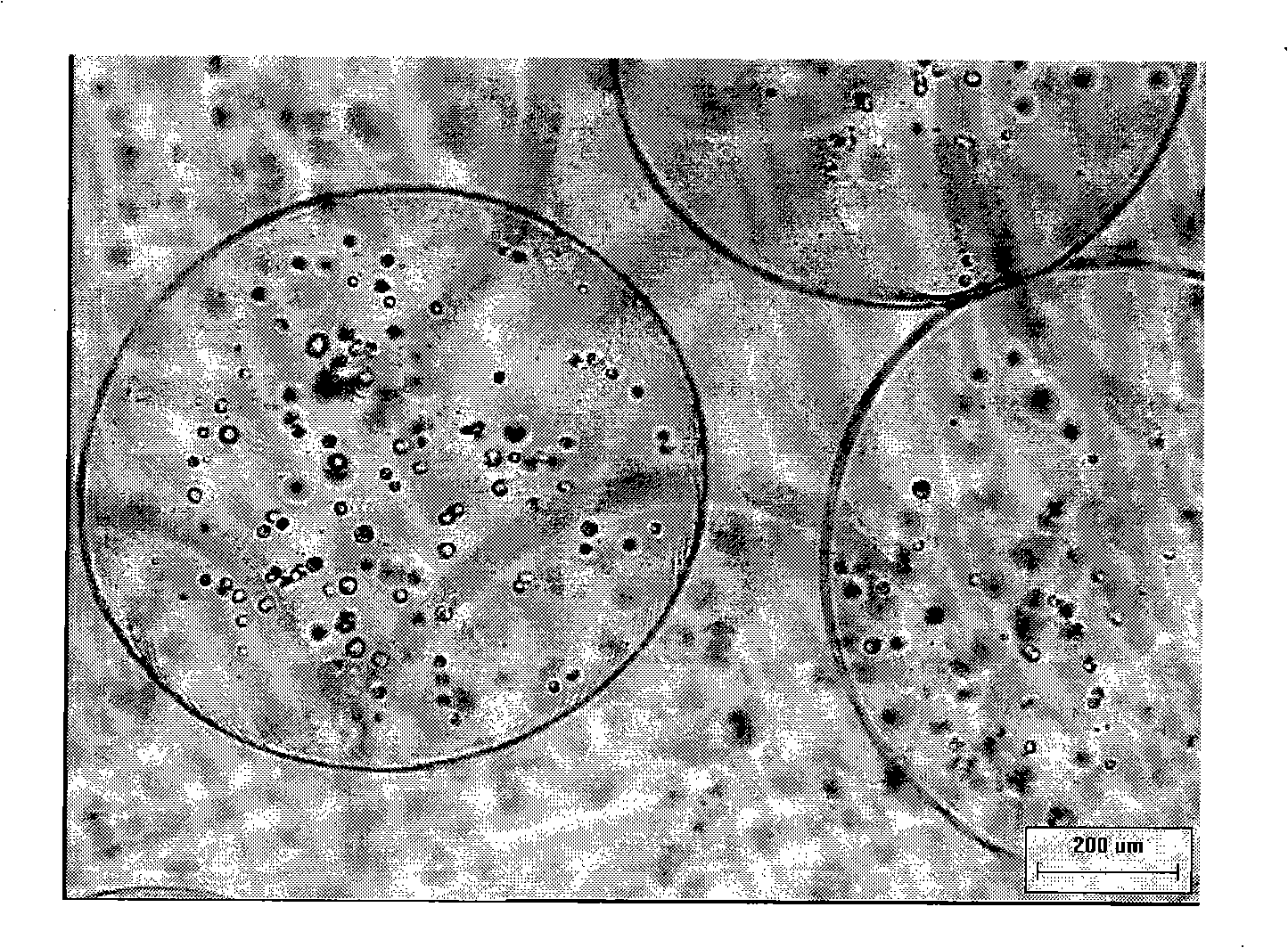Process for coculturing cord blood hematopoietic stem cells and mesenchymal stem cells in dynamic suspending condition
A hematopoietic stem cell and co-cultivation technology is applied in the field of co-cultivation of cord blood hematopoietic stem cells and mesenchymal stem cells, which can solve the problems of high-dose cytokine combination being expensive, and achieve the effect of being beneficial to expansion and reducing shear force.
- Summary
- Abstract
- Description
- Claims
- Application Information
AI Technical Summary
Problems solved by technology
Method used
Image
Examples
Embodiment 1
[0026] In this example, UCB-HSCs and UCB-MSCs were co-cultured under static conditions.
[0027] The freshly isolated UCB-MNCs were divided into 5×10 5 cells mL -1 The density was inoculated into a six-well plate covered with GCSC microcarriers in advance, mixed evenly with calcium alginate chitosan beads embedding ADSCs, and the inoculation density of ADSCs was 1×10 5 cells mL -1 , add IMDM medium to make the culture system 4mL, 37℃, 5%CO 2 , 20%O 2 , Co-cultivated for 9 days under saturated humidity conditions. The concentration of microcarriers was 5 mg·mL -1 , cytokine combination and dosage: SCF 15ng·mL -1 , FL 5ng·mL -1 , TPO 6ng·mL -1 , IL-315ng·mL -1 , G-CSF 1ng·mL -1 , GM-CSF 5ng·mL -1 . NCs were counted every 24 hours, and 2 mL of cell suspension containing GCSC microcarriers were taken from the culture system at 72 hours and 216 hours, digested with 0.125% trypsin containing 0.02% EDTA, and flowed Cytometry analysis and detection of CD34 + CD45 + CD10...
Embodiment 2
[0031] In this example, UCB-HSCs and UCB-MSCs are co-cultured under dynamic suspension conditions.
[0032] The freshly isolated UCB-MNCs were 1 × 10 7 cells mL -1 The density was inoculated into a six-well plate covered with GCSC microcarriers in advance and incubated for 24 hours. After UCB-MSCs fully adhered to the microcarriers, they were mixed with calcium alginate chitosan beads embedding ADSCs and supplemented with IMDM. Medium so that the cell density of UCB-MNCs and ADSCs can be 5×10 in dynamic suspension culture, respectively 5 cells mL -1 and 1×10 5 cells mL -1 , the microcarrier concentration was 5 mg·mL -1 , The combination and dosage of cytokines are the same as in Example 1. Inoculate this mixture into RWVB, keep the speed of the culture chamber of the reactor at 6 rpm, 37°C, 5% CO 2 , 20%O 2 , Co-cultivated for 12 days under saturated humidity conditions. NCs were counted every 24 hours, and 4 mL of cell suspension containing GCSC microcarriers were ta...
Embodiment 3
[0036] This example is the colony-forming CFU-Cs culture of expanded UCB-HSCs.
[0037] CFU-Cs colonies mainly include CFU-Mix’s, CFU-GMs and BFU-Es. The suspension cells in RWVB were cultured for CFU-Cs colonies at 0 hour, 72 hours and 216 hours respectively. The expanded UCB-HSCs were divided into 2×10 5 cells mL -1 Inoculate in methylcellulose medium at a density of 1 mL per 35 mm Petri dish, and 3 dishes in parallel for each sample. 37°C, 5% CO 2 , 20%O 2 1. Cultivate in an incubator with saturated humidity for 10 to 12 days, and count the number of colonies with more than 50 cells under an inverted microscope. The medium is IMDM containing 0.9% methylcellulose, supplemented with 30% FBS, 1% BSA, 50 U·mL -1 Penicillin, 50mg·mL -1 Streptomycin, 1×10 -4 M 2-mercaptoethanol, 2mM L-glutyl ammonium, 50ng mL -1 Recombinant SCF, 10ng·mL -1 Recombinant human IL-3, 10ng·mL -1 Recombinant human GM-CSF and 3U·mL -1 Recombinant human EPO.
[0038] Experimental results: UC...
PUM
| Property | Measurement | Unit |
|---|---|---|
| diameter | aaaaa | aaaaa |
Abstract
Description
Claims
Application Information
 Login to View More
Login to View More - R&D
- Intellectual Property
- Life Sciences
- Materials
- Tech Scout
- Unparalleled Data Quality
- Higher Quality Content
- 60% Fewer Hallucinations
Browse by: Latest US Patents, China's latest patents, Technical Efficacy Thesaurus, Application Domain, Technology Topic, Popular Technical Reports.
© 2025 PatSnap. All rights reserved.Legal|Privacy policy|Modern Slavery Act Transparency Statement|Sitemap|About US| Contact US: help@patsnap.com



